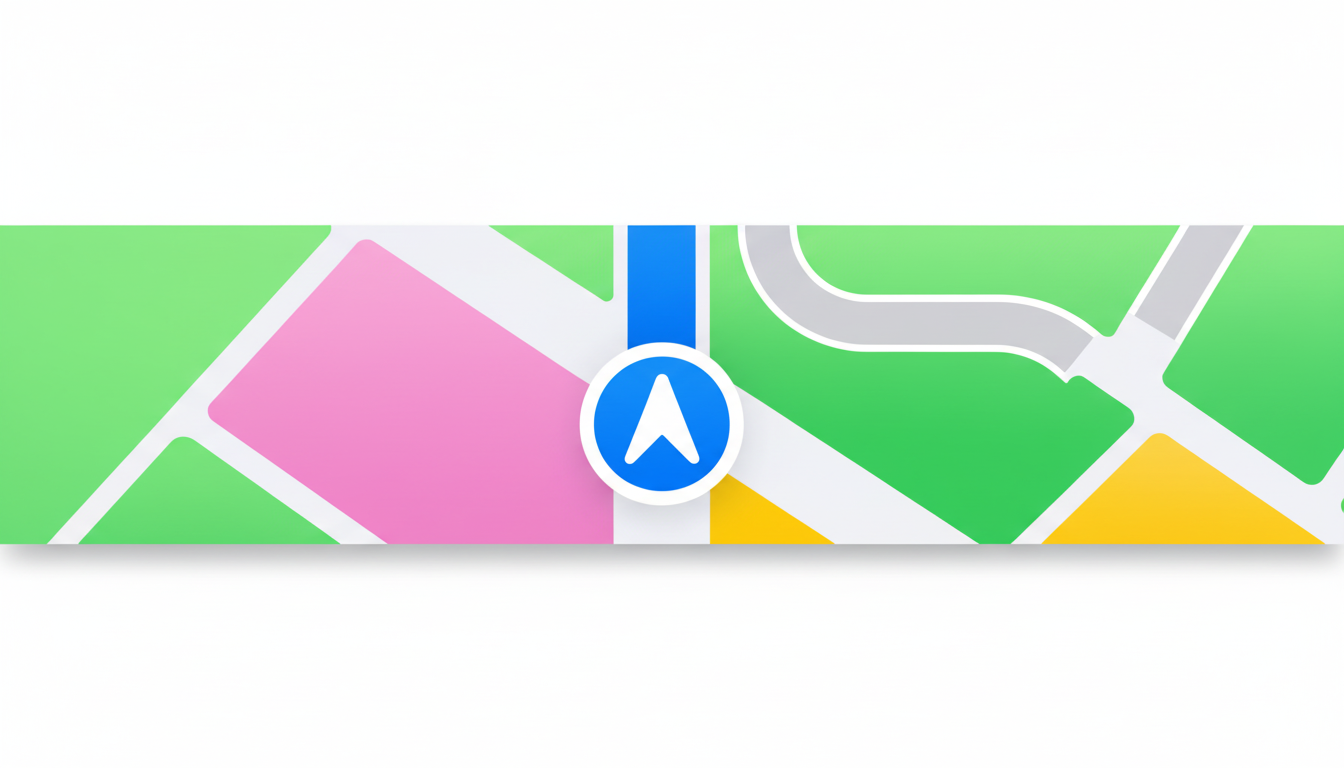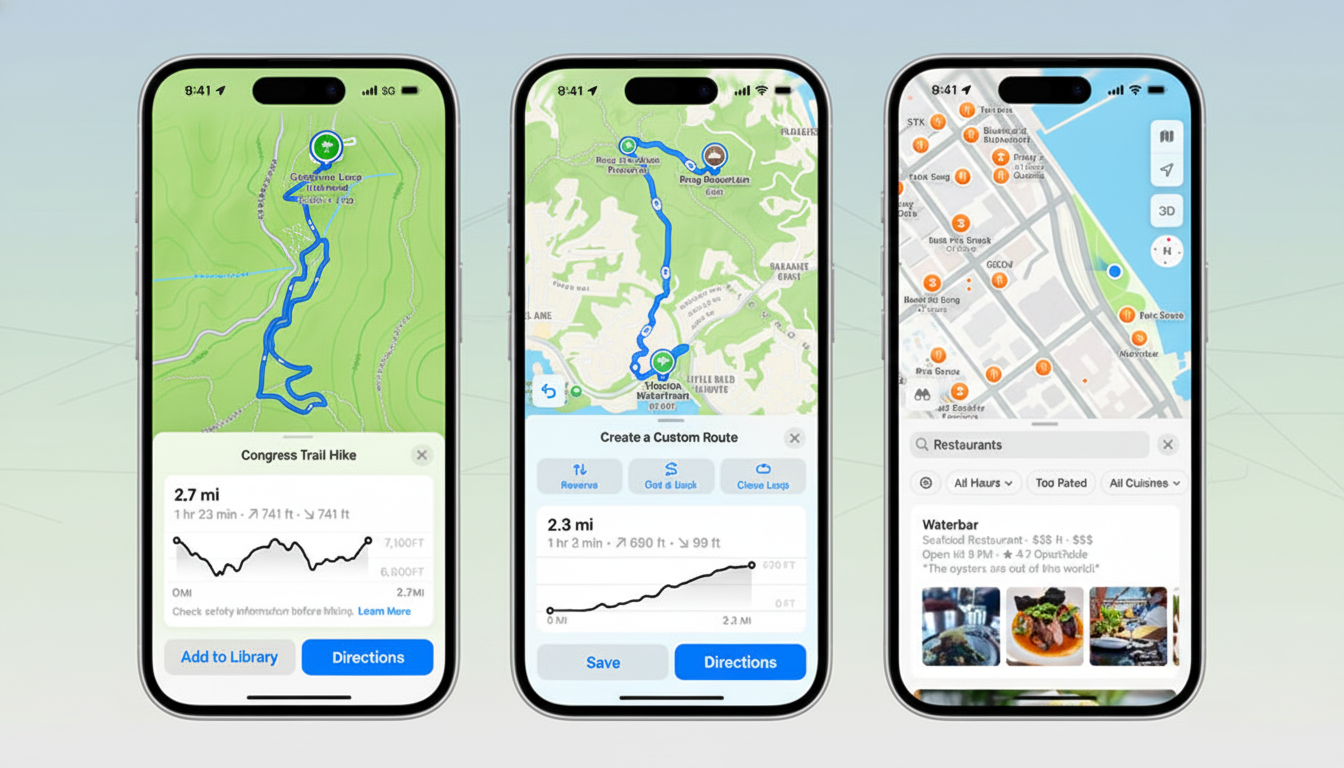If you have relied on Apple Maps to avoid the clutter of Google’s promoted pins, buckle up. Apple is said to be gearing up to bring paid placements to its navigation app, which means that sponsored results might start showing up more directly in your search for coffee, gas or dinner.
What Apple May Be Cooking Up for Maps Ads
Apple is working on an advertising product for Apple Maps that could launch as soon as 2026, Bloomberg’s Mark Gurman reported. The concept essentially mirrors Apple’s mobile App Store Search Ads, just at a local level — restaurants, retailers, and service providers would pay to have those ads appear more prominently when people search for something nearby or browse through the categories.

Apple, behind the scenes, is reportedly using AI to rank and match placements so the results feel helpful, not invasive — think surfacing a sponsored “sushi open now” option that actually isn’t too far away based on your current location, is open for business when you’re searching, and is well-rated by others who’ve dined in.
How the Ads Might Stack Up Against Google Maps
Google Maps already offers Local Search Ads and Promoted Pins, which are frequently the lead result for a search query or offer a branded marker on the map. They work well for businesses, but are polarizing as an experience to someone who’s looking for the freshest organic result first. Anticipate Apple’s presentation to be more integrated with the map canvas and place cards, using clearer labeling while deviating from visual clutter.
One likely differentiator is privacy. Apple has promoted on-device processing and restricted data sharing in advertising materials. Though the details haven’t been finalized, if there are Maps ads, they will almost certainly be consistent with Apple’s existing Ad Services and App Tracking Transparency policies — meaning granular controls, disclosure labels, and minimal cross-app tracking.
Why Apple Wants Local Ads in Maps and Services
Nearby search is one of the most valuable categories in digital advertising. This is a line of business that Google has been monetizing for years, leveraging location-based placements that help bring foot traffic and bookings. For Apple, Maps is an underused palette with enormous scale across hundreds of millions of iPhones, CarPlay dashboards, and Apple Watches.
Services is Apple’s most consistent growth engine, and advertising is a burgeoning piece of the pie. Industry analysts have estimated that Apple’s ads business is already a multibillion-dollar business annually, with the potential to grow if it expands into new ad formats beyond App Store Search Ads and the Today tab. Local ads in Maps fit nicely into that trajectory, especially as Apple further beefs up its small-business tools.
Or, Apple Business Connect is the portal created to enable merchants to claim and spruce up their place cards in Apple Maps. It already accommodates photos, offers, and call-to-action buttons. A paid tier would give Apple an instant pipeline of vetted businesses ready to try out promotions in high-intent moments.

What Users Might See When Sponsored Results Arrive
Look for sponsored results to appear at the top of relevant searches and potentially as lightweight pins during browse mode. Place cards might bear a subtle “Sponsored” stamp, with user-interactable actions like Call, Directions, or perhaps Book (which could be integrated with Apple’s current back-end reservations and ordering partners).
The upside: more relevant discovery and timely offers from companies you might actually frequent. On the downside is what increasingly feels like a government subsidy of paid placements over organic content, particularly in thickly settled urban areas. Power users will look for controls to stop ad personalization or mute categories — features that may determine whether the rollout feels helpful versus pushy.
The Competitive and Regulatory Lens on Maps Ads
Google has claimed there are over a billion people who use Google Maps monthly, and it’s developed a mature ads stack around that audience. Apple isn’t going to catch up overnight, but it doesn’t have to. By adding ads to default iOS experiences, Apple can scale there fast with premium demographics and brand safety.
Regulators in the EU and elsewhere will be looking at how Apple weights paid versus organic listings, how clearly it labels ads, and whether platform rules put rivals at a disadvantage. Monetization will have to be balanced with transparency in any Maps ads strategy so that users don’t feel they’re being self-preferenced.
What to Watch Next as Apple Tests Maps Advertising
Things to watch for include:
- Limited-market pilots
- New ad disclosure in Apple’s privacy pages
- Updates on Apple Business Connect
- Developer-facing APIs for reporting and measurement
If, by tying the experience in with its wider AI strategy, Apple brings us more context-aware placements that are attuned to our location, time of day and intent — without veering into privacy-shredding territory.
Bottom line: if ads are an absolute deal-breaker, Apple Maps could soon start to feel a lot more like Google Maps. The rest will come down to execution — whether Apple can make paid discovery genuinely useful, respectful of privacy, and unobtrusive enough so that most users don’t mind seeing a “Sponsored” label on the way to their next latte.

